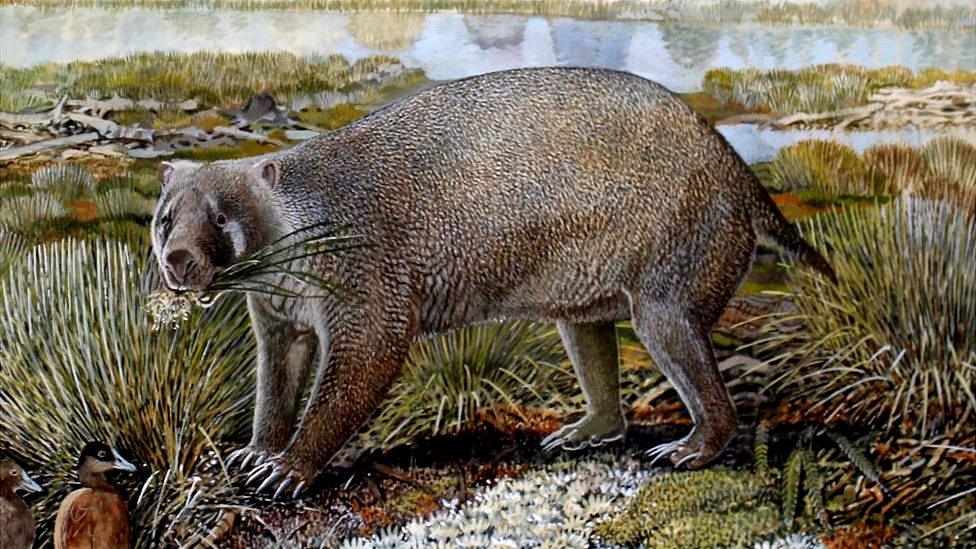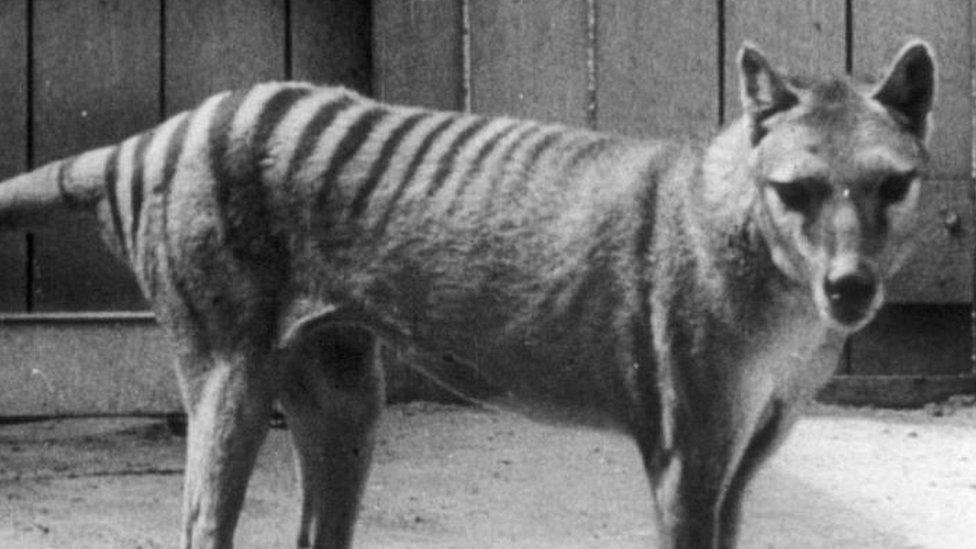Fossil hunters uncover ancient Australian wombat
- Published

The fossils were found at a remote site in Central Australia
Researchers in Australia have uncovered evidence of a previously unknown ancient marsupial which roamed the continent some 25 million years ago.
Described as a cross between a wombat and a marsupial lion, the beast - named Mukupirna fortidentata - is thought to have weighed up to 50kg (110lb).
Skull, bone and jaw fragments from the animal were recovered from a site near Alice Springs in central Australia.
Researchers say the find sheds light on how modern-day marsupials evolved.
Working over 2,000 hours, a team from Flinders University recovered 35 different Mukupirna specimens from hard limestone. These helped paint a picture of what the animal would have been like.
It is thought to have shared a common ancestor with modern-day wombats, and also looked a bit like a marsupial lion known as Thylacoleo carnifex, researcher Arthur Crichton said.
"They are a bit of an evolutionary intermediate between wombats and their more koala-like relatives," he told the BBC.
The team was able to work out the animal's weight using measurements of its teeth and limb bones, and its diet from attributes of their skull, jaws and molars.
"[Its teeth] pretty much confirm it's not a carnivore... it was really quite specialised for processing hard foods like tough fruits, nuts and tubers," Mr Crichton said.
At 50kg, the Mukupirna would have been one of the largest Australian marsupials living at the time, though it is much smaller than the largest-known ancient marsupial - the Diprotaton optatum, which weighed in around 2,500kg.
Little is known about how the Mukupirna went extinct, but environmental change is the likely answer, Mr Crichton said. They existed back when the arid Australian desert was much wetter and covered in forest, he added.

The Mukupirna nambensis - a close relative of the fortidentata - was only discovered in 2020
The research team also found the remains of a species believed to be an ancient possum relative at the fossil site - known as Pwerte Marnte Marnte.
Mr Crichton told the BBC he hopes the remote site - which was discovered 20 years ago but has seen little research so far - could contain more insights into missing chapters on marsupial evolution.
"These [discoveries] are some of the oldest marsupials known from Australia, and are really important for understanding how our iconic marsupials came to be," he said.
"But we still know remarkably little about the early evolution of these animals because there are no fossils from Australia between 25 and 55 million years ago."
Related topics
- Published17 August 2022
